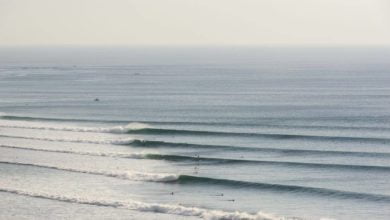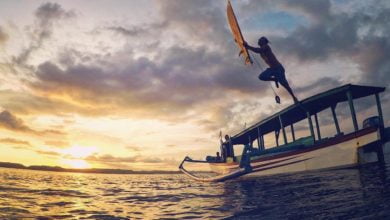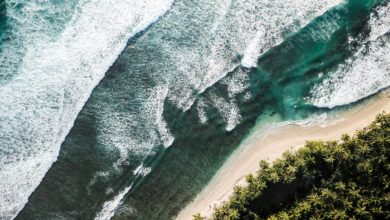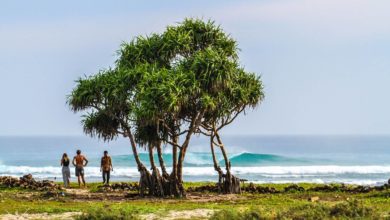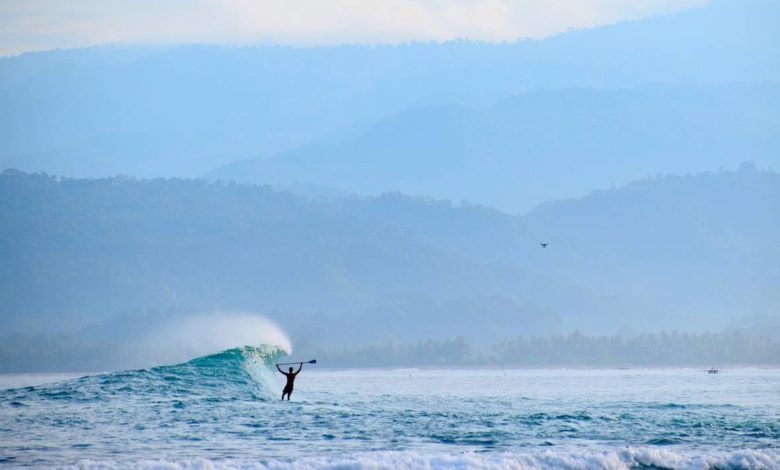
PACK CONSCIOUSLY FOR YOUR NEXT SURF-TRIP
As a surfer, whether a complete newbie or a well salted sea dog, there are very few things in life more exciting than going on a surf trip…
The elation and stoke that comes from hitting the open road or flying to an exotic foreign land with a bunch of friends to search for those dreamy blue tubes or undiscovered gems can be intoxicating. However, planning and packing for these epic surf trips has somewhat less of an appeal to it, although it is vitally important for a smooth hassle free surf trip.
Each year tens of thousands of surfers embark on surf trips and vacations that have been planned for months, even years, yet most of the actual packing usually only gets done typical surfer style, at the last minute. This article contains a surf trip checklist to help you streamline your packing and make sure you have all the essentials. There are many surf trip checklists available online but this list differs in one main regard. It has been put together with sustainability and eco responsibility in mind.
https://www.instagram.com/p/BuBW3lOB6kw/
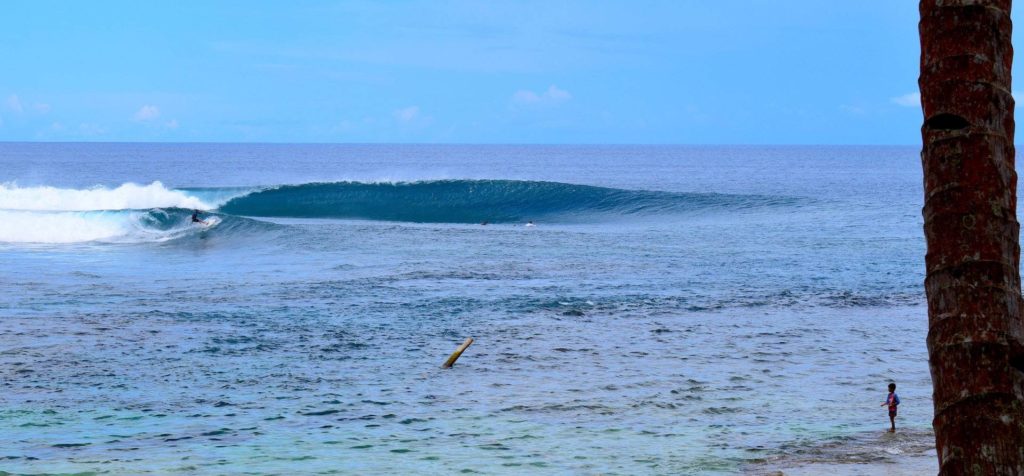
@surf.4.earth
As surfers, we are blessed enough to have the ocean as our playground. We need to be responsible with our wave riding practice. We need to value and honour the seas and amazing waves in every way possible to ensure that future generations of frothers can enjoy the same epic surf as we do. The most simple way to do this is to be eco conscious when packing for and planning your next surf adventure.
Let the era of sustainable eco conscious surf travel begin! There are many ways you can make a difference without having to break the budget, all it takes is a little bit of planning and the willingness to help keep our oceans clean.
Eco-Conscious Surf Products, without sacrificing performance.
The biggest and most important question for any surf trip, how many surfboards should I take with? This question is a difficult one to answer as it is completely dependant on a few things such as your experience level as a surfer, the type of waves you will be surfing and where you will be travelling too. Factors such as additional airfares and transport of boards once you have reached your destination also come into play. The number of surfboards you take with is completely personal yet for most surf trips, two to four boards should be sufficient. Ideally you want to take boards that cater for a wide range of conditions from the smaller flat days to the overhead+ days in which something a bit longer and with more volume will be ideal. Personally I take two go-to-surfboards that I feel comfortable surfing in most conditions from 2ft-6ft. I then always take it a step-up for the bigger days. If space permits, it is great to take a fish or fun board for playing around during the more mellow sessions.
Surfboards and Sustainability
Unfortunately the materials used to make most surfboards these days (polyurethane foam or PU, polystyrene foam or EPS, polystyrene foam PS, along with the two main surfboard resins, polyester resin and epoxy resin) are not in any way eco friendly or sustainable. Fortunately a growing amount of surfboard shapers are becoming increasingly eco conscious and there are some very rad eco-board alternatives that are becoming more widely available.
When buying boards for your next trip, keep sustainability in mind and consider these great options:
Many leading surf brands have started creating boards under the ECOBOARDS label (boards are made using recycled foam blanks and bio-resins). The ECOBOARDS Project has resulted in top quality boards ranging from fun boards to competitive high performance short boards being made in a more sustainable manner.
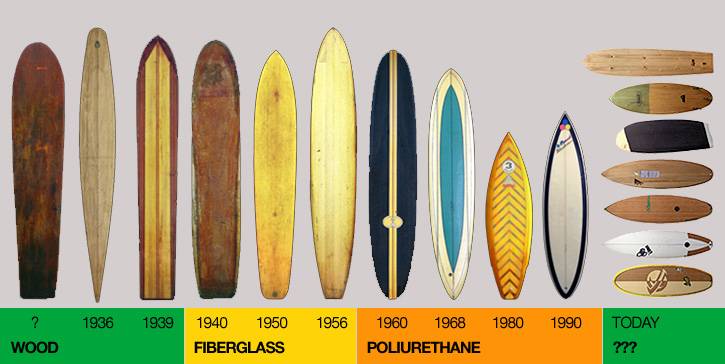
Wooden Surfboards
Then there is always the option of the classic good old wooden surf boards! There are many local and international shapers that are still creating high grade high performance wooden surfboards. These boards are by far the best option from an eco friendly minimal carbon footprint point of view. To name a few good options: Flama Surf, Yoni Surfboards, Grain Surfboards, Nomade Surfboards, Ventana Surboards.
What does it feel like to ride a wood surfboard? Words by Mark Gray (The Surfer’s Path nº67, 2008)
“Likewise, you don’t have to be hyper-tuned pro to sensea different ‘feel’ to an epoxy board if you’re used to riding a polyurethane board. Therefore, it stands to reason that wood will offer a different set of sensations again. Any wooden board that has just a bit more heft tan you’re used to will give a feeling of more drive when surfing down the line, more glide over flat spots, a greater ease in catching waves (especially with offshore winds), and a i smoother drop on take off. In general, wood boards use gravity more effectively than superlight boards do.”
Packing your boards:
There are many awesome surf board bags out there with many different styles and protection methods for your boards. The most important thing is how you choose to additionally wrap/protect your boards within the board bag. This is where you can make a big difference without having to spend any cash. DON’T wrap your boards in plastic film bubble wrap or any form of foam or polystyrene. Bubble wrap seems to be common practice amongst first time surf travellers, yet it is wasteful and highly polluting. A simple yet effective way to wrap up your boards safely is by using old cardboard boxes for the nose and tail along with yoga mats and any clothes or towels you plan to take on your trip. This way you are able to pack a good portion of your luggage into your surfboard bag and can possibly even save weight on other check in luggage.
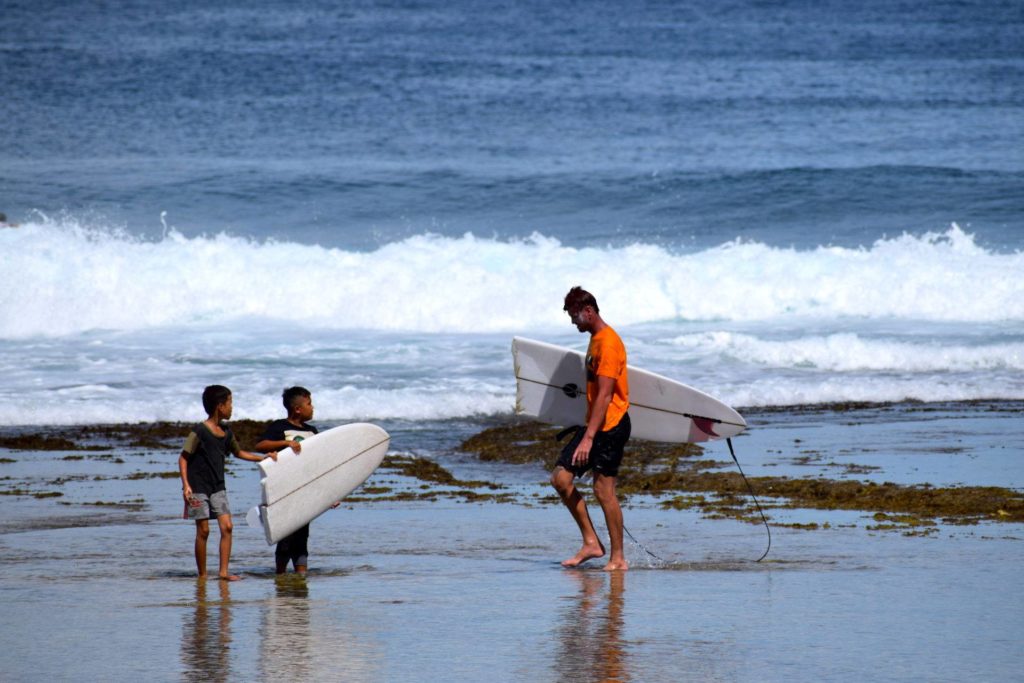
@surf.4.earth
Leashes/Leg ropes
Take at least two leashes, three to be safe. Nowadays leashes are made strong yet it’s always a bummer if you snap one and are forced to sit out on sessions and watch your friends get shacked from the beach. While doing some research I came across a Swedish company that is making sustainable surf products, my favourite being a leash that is made from recycled PET bottles!How epic! So if you planning on buying an extra leash for your trip, give these homies some love and place an order online for a recycled plastic leash. And yes, they are strong and super durable.
Extra sets of fins
As with the extra leashes, rather be prepared and have spare fins for each of your boards so that if you happen to knock a fin or two out on the reef, it’s not a problem. You are going to thank yourself for taking those extra fins, especially when traveling to less developed countries and remote surfing areas where it is nearly impossible to find surf board fins. If you don’t take spares and you loose a fin or two, you could always use your now free time to try shape a set for yourself from driftwood or bamboo as you sit on the beach unable to surf while your friends score wave after wave. As far as fin options go, there are hundreds of sustainable, natural material options. Try out some of the fins made from wood, bamboo or hemp. At least if you knock one out it won’t take 1000+ years to decompose. P.s. Don’t forget to take a few fin keys with as well!
The Wax problem
Your typical surf wax (all the most popular and most commonly used brands) is real evil stuff. Most of the average surf waxes are derived from bi-products from the crude oil and petroleum industry. This means they contain chemicals such as paraffin wax, petroleum jelly, microcrystalline wax, vistanex as well as synthetic glues, resins, dyes and fragrances. All of which are highly toxic to both the human body and the ocean eco system. Many of these chemicals are proven cancer causing carcinogens and are highly harmful to marine life and coral reefs.
Blind move right? Yet still roughly 35 million surfers world wide, this number is a rough guess made by ISA and the Surf Industry Manufacturer’s Association (SIMA), are using this devilish stuff to grip up their boards. Aren’t we as surfers supposed to be more eco friendly beings, aligned and in tune with nature and the oceans?
Fortunately there are some really cool alternatives to the wax dilemma. There are multiple brands of eco-friendly waxes available as well as one or two non-wax alternatives. Some of the advertised eco waxes still aren’t the most sustainable option as they may contain products such as palm oil which is another whole can of worms.
Making your own eco friendly surf wax is also relatively easy with most of the ingredients (bees wax, some kind of plant/tree resin and coconut oil) being widely available. If you don’t have the time to make your own surf wax, below are some really great eco friendly wax brands to try out:
Bees Surf Wax (AUS)- Good Surf Wax (AUS) – Matunasco (USA) – Bubble Gum Surf Wax (WorldWide)
There are also alternatives to using wax such as these cool traction/grip pads for surfboards.
The neoprene disaster, wetsuits and booties
Most surf trips end up in sunny tropical locations with clear warm water waves where wetsuits and booties are not needed. However there are some seriously adventurous surfers out there who like adventuring to the far off corners and colder uncrowded wave regions where wetsuits are most definitely essential. If you are one of these wave hungry frothers, or if you simply need to replace your old suit, keep this next bit of info in mind.
Neoprene wetsuits (and all neoprene surf gear; booties, hoodies, gloves) are even more environmentally harmful than petroleum based surf wax. Neoprene wetsuits are typically manufactured in one of two ways. Either, oil-based neoprene, created by a vast amount of invasive oil drilling beneath the earths crust, or there is limestone-based neoprene, which involves mining to great depths which causes huge devastation to the environment from the mining procedures. Both are completely non-renewable and have significant, long term detrimental effects on the environment and ocean ecosystem. As such, these wetsuits cannot be deemed environmentally friendly in any way shape or form. Neoprene is also non recyclable, yet another issue to be addressed.
Once again, there are a few wetsuit companies that are taking a stand and trying to promote a sustainable surf culture. Wetsuit technology has improved hugely over the past few years and it is now possible to purchase eco friendly wetsuits made from natural sustainably harvested rubber from trees. This is a very exciting development!
Next time you buy a wetsuit, I urge you to make the eco friendly purchase from one of these companies:
Vissla – Picture Organic – Patagonia
Senseless sunscreen vs. Eco-Conscious sunscreen
One of the most valuable and important things you can take with you on your surf trip is sunscreen, and plenty of it. The sun is a serious force to be reckoned with, especially if you make the most of your surf trip and try to surf three or more sessions a day. There are few things worse than having sunstroke after the first few days into your trip leaving you flat on your back unable to move or be out in the waves with your friends. Thus the reason for plenty sunblock. A surf hat and long sleeve rash vest also serve as great protection from the direct sun. As sunscreen goes, there are some serious consideration points other than SPF level to think about.
Similar to both surf wax and neoprene wetsuits, most sunblocks/sunscreens can be hazardous to the human body and the ocean ecosystem. As there is so much information (enough to write a few books) on how certain sunscreens and ingredients found within them have serious health implications for humans, this article will only address the negative environmental impacts of sunscreens. There are at least 6 different chemicals found inside roughly 80% of the sunscreens on the shelves that are highly harmful to the marine environment. If you see any of these names on a bottle of sunscreen, rather not buy it:
– Oxybenzone (The most common and the most nasty of the chemicals found in sunscreens)
– Octinoxate
– 4-methylbenzylidene camphor
– Octocrylene
– Methylparaben
– Ethylparaben
– Propylparaben
– Butylparaben
– Benzylparaben
– Tricolosan
– Para-aminobenzoic acid
All of the above listed chemicals are directly harmful in some way or another to the ocean ecosystem and the organisms that live within it. The most recent research available has been on Oxybenzone and how it is directly affecting the rate at which coral reefs around the world are dying off and bleaching. There is an estimated 10 000-15 000 tons of sunscreen that slides off of swimmers, divers, snorkelers and surfers each year into the ocean and a large percentage contains these hazardous ingredients. This sunscreen issue was never taken into consideration until marine scientists in Hawaii started noticing a direct increase in coral bleaching in areas with high numbers of tourists enjoying ocean activities.
Fortunately, once again, there are incredible non-harmful sunscreens that work just as well yet don’t harm the ocean environment. Be the responsible surfer and only protect yourself with the good stuff that won’t completely annihilate our earth’s reefs. No reefs basically equals no waves in many surfing locations.
Here are some epic sustainable sunscreen brands that you should take with you on your next surf trip:
Surf Yogis – Mandana Naturals – Mamaloha – Surf Mud – Kulit Skin Care
The above points are the easiest ways in which you can become the most sustainable surf traveler. There are obviously many other important changes you can make such as taking a steel straw and reusable water bottle along, choosing the most eco friendly forms of travel with the lowest carbon emissions (drive rather than fly, if possible) and buying fresh food produce from local farmers markets trying to avoid supermarket foods wrapped in a hundred layers of plastic.
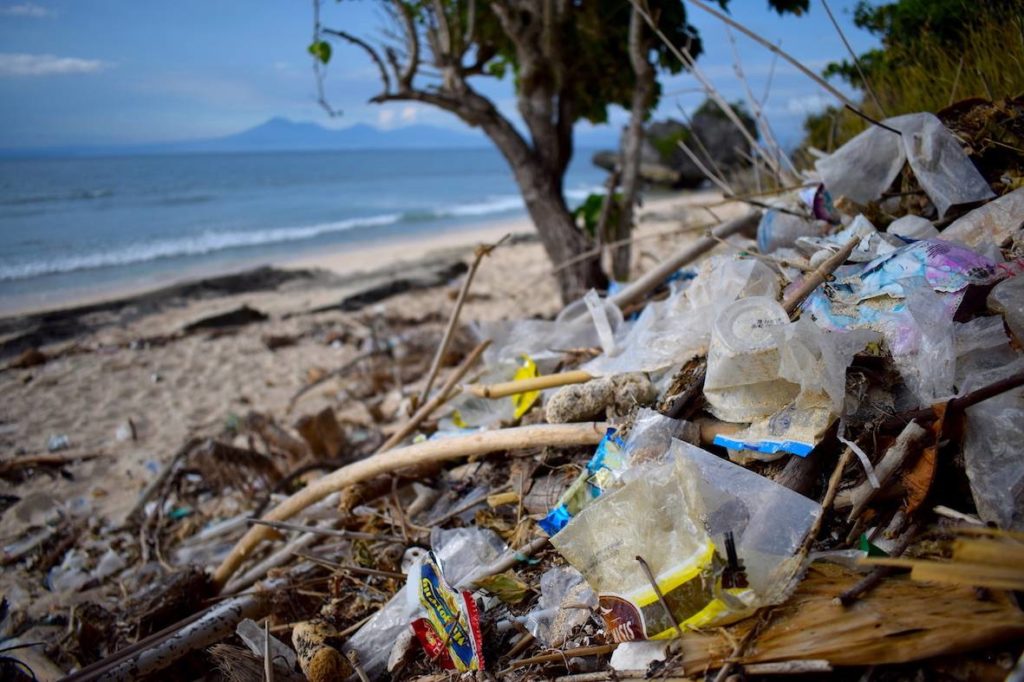
Other things you should consider packing for your trip include; soft racks, rash guard, ding repair stuff, first aid kit, insect repellent, travel insurance info and copies of important documents, sunnies, hammock, multitool, duct tape, headlamp, handheld gps, all the camera gear and some of your favourite snacks/treats from home. Anything forgotten behind will become a lot less important when you get your daily dose of barrels and empty waves with your friends in that new exciting surf destination.
Globally, our ocean’s ecosystem’s health are at a very fragile point. We as surfers have one of the biggest responsibilities to keep the seas clean and promote mass eco awareness. From life sustaining oxygen and protein to the incredible waves we ride, human life would not be the same or even possible without a healthy functioning ocean ecosystem. Make sure your next surf trip is as sustainable as possible and do your part in keeping our oceans clean and healthy.
